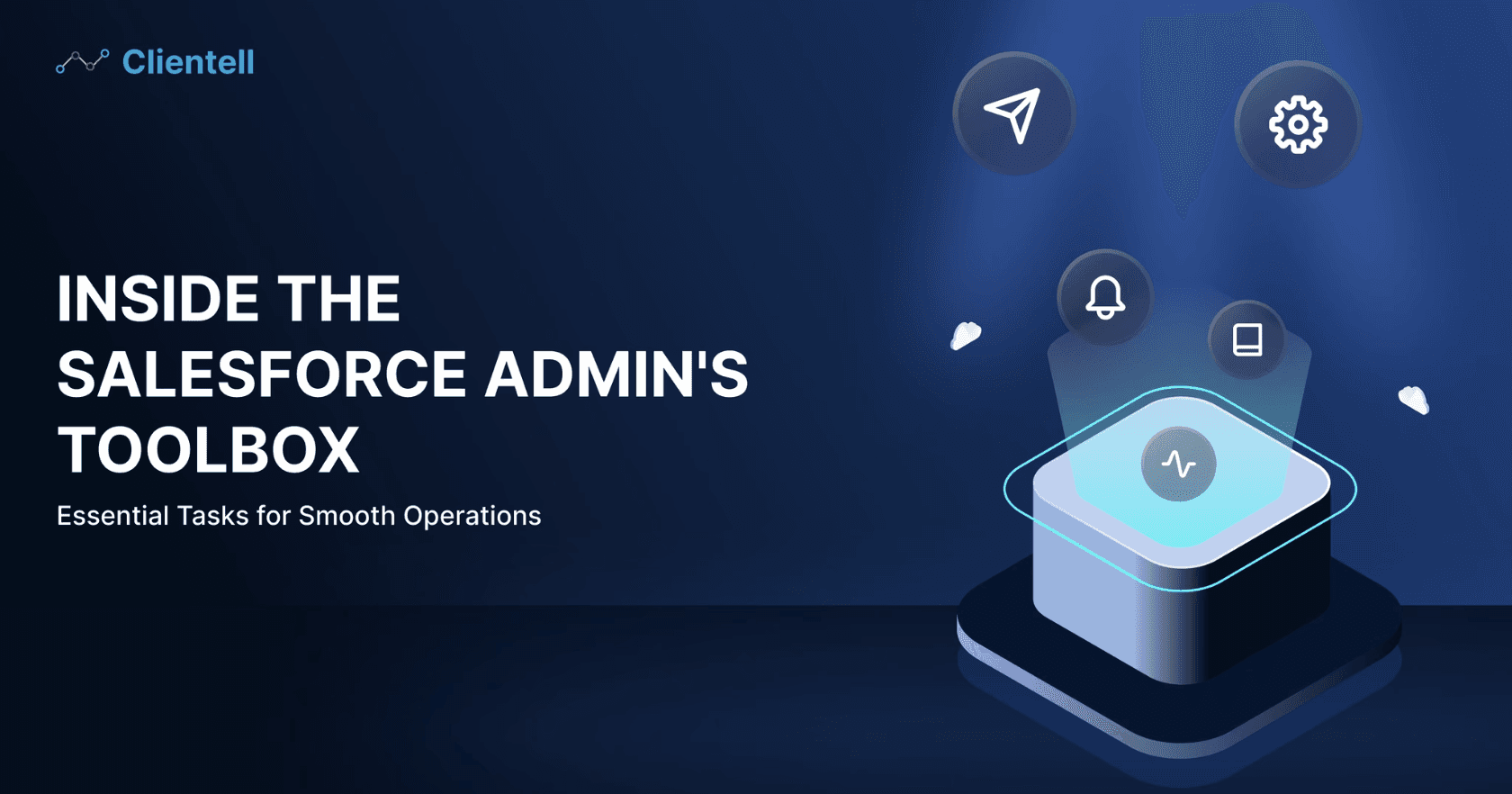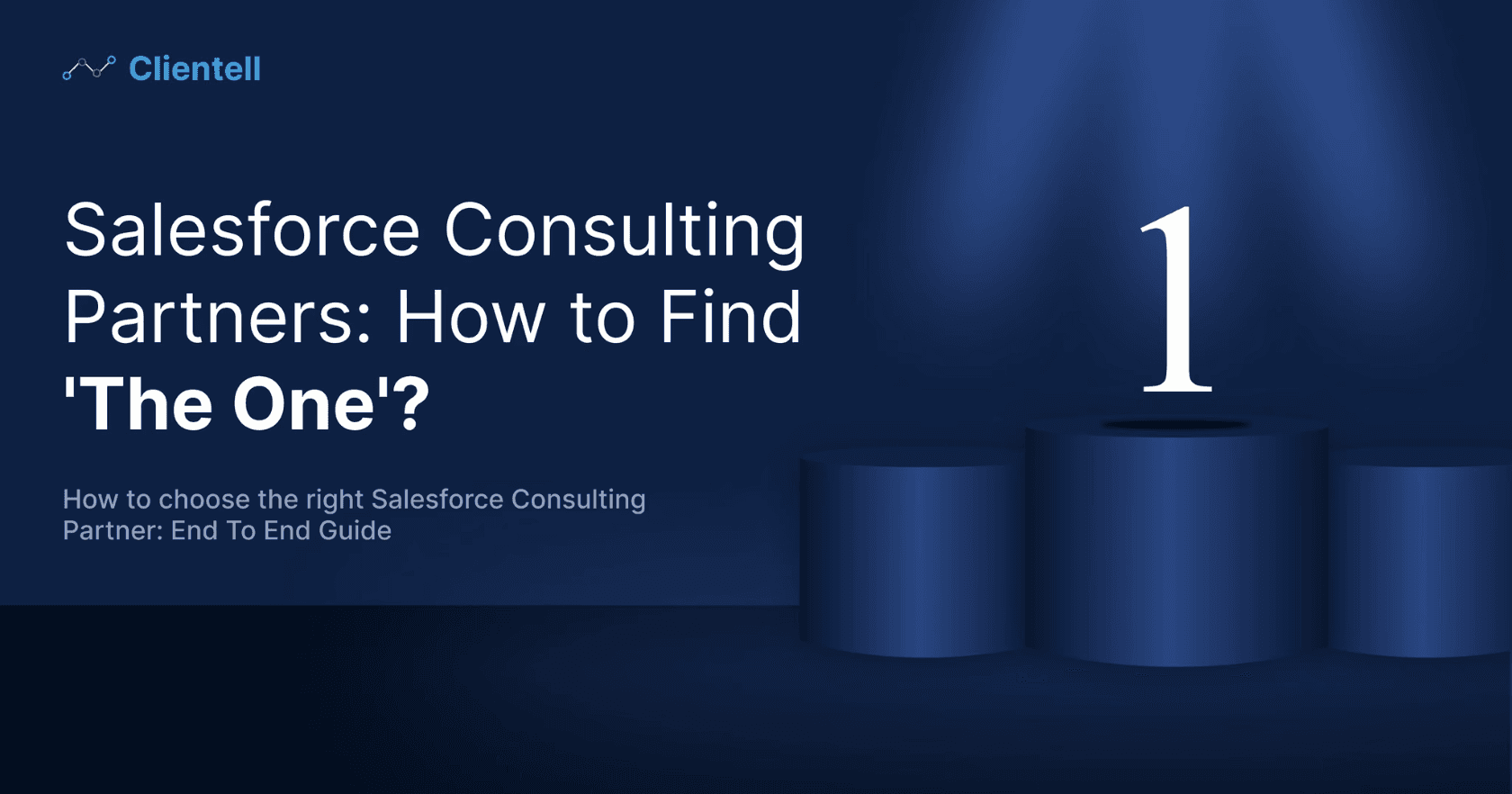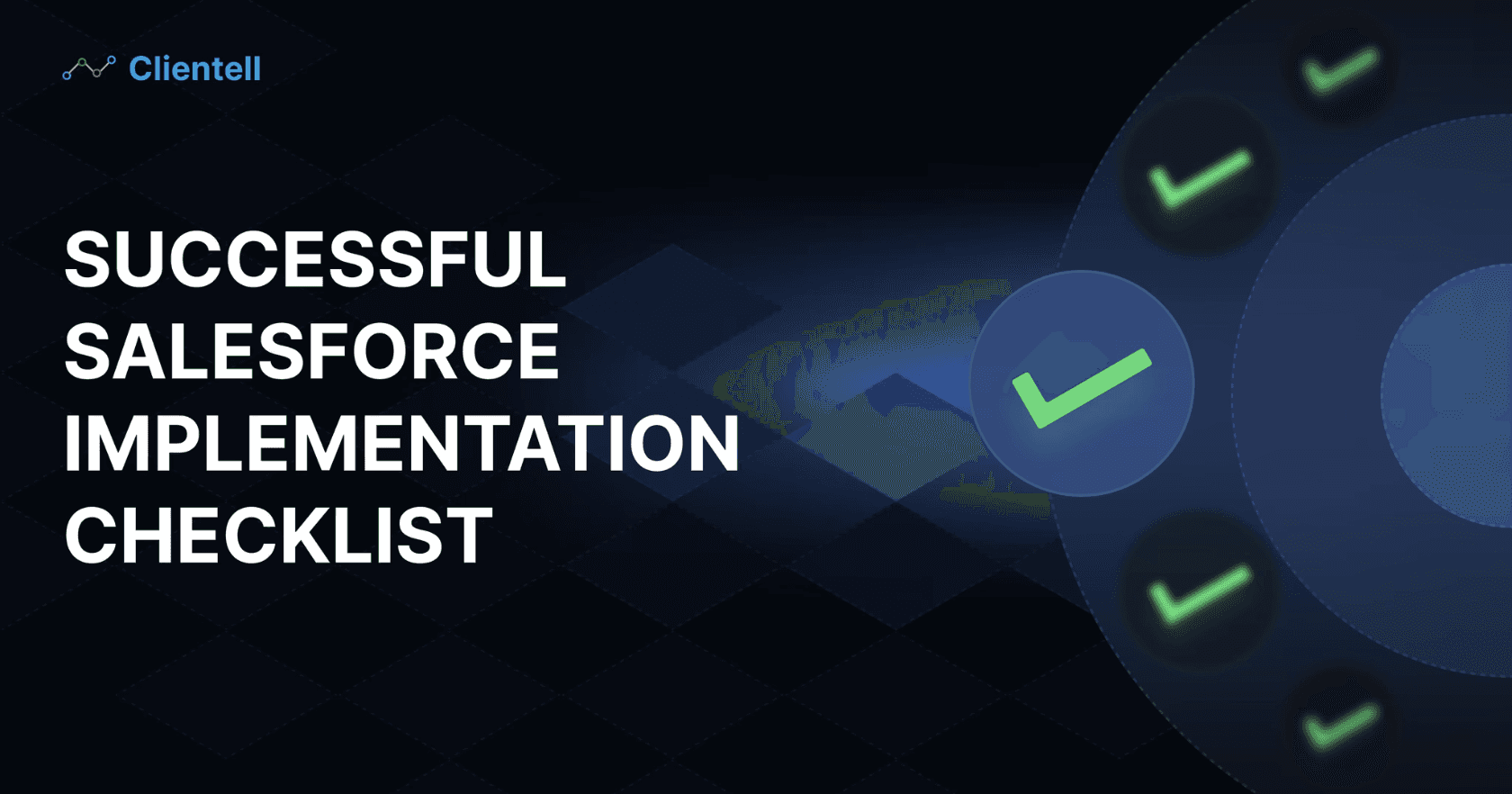Salesforce is the titan of CRM platforms! If business were a game, Salesforce would be the all-star quarterback, calling the plays and leading the team to victory. This cloud-based giant has been transforming how companies manage customer interactions, sales, and services. With its vast suite of tools, it’s like the powerhouse of CRM solutions, offering everything a business needs to excel in customer relationship management.
In 2023 alone, Salesforce secured a remarkable 25% increase in market share, further solidifying its dominance in the CRM space.
Now, let’s explore Salesforce's groundbreaking advancements in AI and machine learning, which are reshaping the industry, alongside essential Salesforce best practices for you to adopt.
Introduction to AI and Machine Learning
Now, picture this: you've got Salesforce working like a charm, but what if you could boost it? Enter AI and ML, the dynamic duo ready to take your Salesforce experience to the next level.
AI refers to the capability of machines to imitate intelligent human behavior. In Salesforce, AI algorithms analyze vast amounts of data to make predictions and recommendations.
ML is a subset of AI that enables systems to learn and improve from experience automatically. In Salesforce, ML algorithms can autonomously identify patterns and adapt to new data, optimizing processes over time.
These technologies are like the secret sauce that turns your CRM system into a powerhouse of:
Predictive Analytics: AI in Salesforce predicts customer behavior and sales trends, empowering proactive decision-making.
Personalized Customer Journeys: ML enhances Salesforce's ability to create personalized experiences based on individual customer preferences and interactions.
Automated Workflows: AI and ML automate routine tasks like lead scoring, customer support routing, and data entry, freeing up time for strategic initiatives.
With AI and ML, Salesforce becomes your digital crystal ball, foreseeing customer needs, and your tireless assistant, automating routine tasks to enhance productivity and customer satisfaction.
Significance of Integrating AI/ML into Salesforce
Integrating AI and ML into Salesforce is a game-changer, revolutionizing how you understand and interact with your customers. Imagine having insights so sharp they predict your next big sale, automate tedious tasks, and tailor every customer interaction with pinpoint accuracy.
Example: TakeCo (Technology Industry)
Impact: By analyzing customer data in real-time, AI predicted buying patterns and recommended personalized product offerings, boosting sales by 30% and enhancing customer satisfaction through proactive service.
This integration of salesforce best practices of AI and ML is similar to strapping a jet engine onto your trusty CRM—prepare for takeoff!
The Opportunities of AI and Machine Learning in Salesforce
Let’s highlight the transformative opportunities AI and ML bring to Salesforce, showcasing specific use cases and success stories to illustrate their impact.
A. Enhancing CRM
1. Personalization and Customer Insights
Actionable Insights: AI and ML can turn vast amounts of customer data into actionable insights. Think of it as having a personal shopper who knows your customers better than they know themselves.
Salesforce Einstein AI: This tool helps companies like Amazon personalize recommendations. For example, Amazon's use of AI-driven recommendations has led to a 35% increase in sales from personalized product suggestions.
2. Predictive Analytics for Sales Forecasting
Accurate Forecasting: With predictive analytics, sales teams can forecast with unmatched accuracy.
Used Cases: Salesforce’s AI can predict which leads are most likely to convert, helping companies like Dell prioritize their efforts. Dell reported a 20% increase in lead conversion rates after implementing Salesforce’s predictive analytics.
B. Improving Marketing Automation
1. Targeted Campaigns and Lead Scoring
Precision Marketing: AI takes the guesswork out of marketing, allowing for campaigns that hit the bullseye every time.
Example: Salesforce Pardot uses AI to score leads and segment audiences. A case in point is how Uber increased its email marketing click-through rate by 50% by using AI-powered lead scoring.
2. Dynamic Content Optimization
Personalized Content: AI ensures marketing content is tailored to individual preferences and behaviors.
Use Case: Companies like Spotify use Salesforce to dynamically optimize content. Spotify's personalized playlists, powered by AI, have increased user engagement by 30%.
C. Streamlining Service and Support
1. Intelligent Case Routing and Resolution
Efficient Service: AI-powered tools can automatically route service cases to the most appropriate agents, reducing response times and increasing resolution rates.
Example: ABC Enterprises integrated AI in their Service Cloud to achieve faster case resolution. They saw a 40% reduction in average resolution time, similar to having a smart dispatcher who always sends the right person to the right job.
2. Sentiment Analysis and Customer Satisfaction Prediction
Proactive Support: Understanding customer sentiment can be a game-changer. AI can analyze interactions and predict customer satisfaction.
Use Case: Apple uses AI for sentiment analysis to stay ahead of potential issues. This proactive approach has helped them maintain a 95% customer satisfaction rate, similar to having an emotional barometer for the business.
Challenges in Implementing AI and Machine Learning in Salesforce
Implementing AI and ML in Salesforce can significantly enhance your CRM capabilities, but it comes with its own set of challenges. From ensuring data quality to navigating compliance issues, and managing organizational change, there are several hurdles to overcome.
Let’s explore these challenges in detail and provide actionable salesforce best practices drawn from successful companies.
A. Data Quality and Accessibility
1. Data Cleaning and Preparation
AI is only as good as the data it processes. Poor data quality can lead to inaccurate predictions. Ensuring clean, well-prepared data is crucial. Think of it as polishing a lens to get a clearer view—without it, everything’s just a blur.
Salesforce best practices Example: Google
Step-by-Step Guidance:
Data Auditing: Regularly audit your data for inconsistencies and errors. Google employs rigorous data auditing processes to ensure high-quality data.
Automated Cleaning Tools: Utilize tools like Salesforce’s Data Management Platform (DMP) to automate data cleaning. Google uses AI-powered tools to cleanse data automatically.
Manual Review: Periodically review data manually to catch issues that automated tools might miss. Google’s data teams manually review critical datasets to ensure accuracy.
2. Integration of External Data Sources
Integrating data from various sources can be a Herculean task. Salesforce needs to pull data from disparate systems like a well-coordinated orchestra, ensuring everything harmonizes perfectly. Companies must ensure seamless data integration to leverage AI effectively.
Salesforce best practices Example: Netflix
Step-by-Step Guidance:
APIs for Seamless Integration: Netflix uses APIs to gather data from various content providers.
Data Harmonization: Netflix harmonizes metadata from various sources to maintain consistency.
Continuous Monitoring: Netflix continuously monitors its data pipelines for smooth operation.
B. Model Interpretability and Transparency
1. Ensuring Fairness and Bias Mitigation
AI models must be fair and unbiased. This means actively working to identify and mitigate biases. It’s like being a diligent referee, ensuring the game is fair for everyone involved. Salesforce’s AI ethics guidelines help companies maintain fairness and transparency.
Salesforce best practices Example: Microsoft
Step-by-Step Guidance:
Bias Detection Tools: Microsoft employs Fairlearn, an open-source toolkit for assessing and improving the fairness of AI models.
Diverse Training Data: Microsoft ensures its AI models are trained on a wide range of data to enhance fairness.
Regular Audits: Microsoft frequently audits its AI systems to ensure they operate fairly.
2. Compliance with Regulations (e.g., GDPR, CCPA)
Navigating the regulatory landscape is essential. Ensuring compliance with data privacy laws like GDPR and CCPA is crucial to avoid legal pitfalls. It’s like walking a tightrope—one misstep can lead to serious consequences.
Salesforce best practices Example: Salesforce
Step-by-Step Guidance:
Data Mapping: Create a detailed map of data flows to understand where personal data is stored and processed. Salesforce maps its data flows to ensure compliance.
Privacy Impact Assessments: Conduct privacy impact assessments to identify and mitigate risks. Salesforce performs these assessments regularly to stay compliant.
Training and Awareness: Train employees on data privacy laws and company policies. Salesforce provides ongoing training to its staff on GDPR and CCPA compliance.
C. Adoption and Change Management
1. User Training and Skill Development
Introducing AI requires training and skill development. Teams need to be equipped to use these new tools effectively, similar to training pilots to fly a new, high-tech jet.
Salesforce best practices Example: Amazon
Step-by-Step Guidance:
Comprehensive Training Programs: Amazon offers extensive training programs to help employees adapt to AI tools.
Hands-On Workshops: Amazon uses workshops to give employees real-world experience with new technologies.
Continuous Learning: Amazon encourages employees to continuously update their skills to stay ahead of technological advancements.
2. Overcoming Resistance to Automation
Resistance to change is natural. Overcoming this requires clear communication about the benefits of AI and how it enhances, rather than replaces, human roles. It’s like convincing a skeptical audience that this magic show is real and will make their lives easier.
Salesforce best practices Example: General Electric (GE)
Step-by-Step Guidance:
Clear Communication: GE emphasizes the advantages of AI in improving efficiency and reducing workload.
Stakeholder Involvement: GE engages employees at all levels to get buy-in and reduce resistance.
Showcase Success Stories: GE shares internal success stories to demonstrate the positive impact of AI.
Salesforce Best Practices for Successful Integration
Unlocking the full potential of AI and ML within Salesforce isn’t just about technology—it’s about strategy and execution.
Let’s understand salesforce best practices from industry leaders who have mastered AI integration. From setting clear objectives to leveraging pre-built solutions, discover actionable steps to elevate your Salesforce game and propel your business forward with precision and flair.
1. Establishing Clear Objectives and Metrics
Set clear goals and metrics from the start. Know what success looks like and how to measure it. It’s like charting a course before setting sail—you need a destination and a way to track your progress.
Salesforce best practices Example: Coca-Cola
Step-by-Step Guidance:
Define Specific Goals: Clearly define what you aim to achieve with AI integration. Coca-Cola set specific objectives to improve customer engagement through personalized marketing campaigns.
Identify Key Metrics: Determine metrics that align with your goals. Coca-Cola tracked metrics such as customer satisfaction scores and campaign ROI to measure success.
Regular Monitoring and Adjustment: Continuously monitor progress and adjust objectives as needed. Coca-Cola conducted quarterly reviews to ensure alignment with business priorities.
2. Building a Robust Data Infrastructure
A strong data foundation is essential. Invest in a robust data infrastructure to support AI initiatives, just like building a solid foundation for a skyscraper.
Salesforce best practices Example: Netflix
Step-by-Step Guidance:
Data Architecture Planning: Plan a scalable data architecture to handle AI-driven insights. Netflix designed a robust architecture capable of processing vast amounts of streaming data.
Data Quality Assurance: Implement rigorous data quality assurance processes. Netflix uses automated tools and manual checks to ensure data accuracy and reliability.
Data Governance Framework: Establish a data governance framework to maintain consistency and compliance. Netflix’s governance framework ensures data is securely managed across all operations.
3. Leveraging Pre-built Solutions and AppExchange
Don’t reinvent the wheel. Leverage pre-built AI solutions and Salesforce’s AppExchange to accelerate implementation. It’s like using a pre-made pizza base to whip up a gourmet pie in no time.
Salesforce best practices Example: Spotify
Step-by-Step Guidance:
Evaluate AppExchange Solutions: Explore Salesforce’s AppExchange for AI tools that fit your needs. Spotify utilized AppExchange to integrate AI-powered analytics tools for personalized music recommendations.
Customization and Integration: Customize pre-built solutions to align with specific business requirements. Spotify integrated AI models into their existing Salesforce environment for seamless data integration and analytics.
Vendor Management: Maintain relationships with AppExchange vendors for ongoing support and updates. Spotify collaborates with vendors to enhance AI capabilities and optimize performance over time.
4. Iterative Implementation and Continuous Improvement
Implement AI in phases and continuously refine the process. Think of it as a perpetual beta mode—always improving, always evolving.
Salesforce best practices Example: Amazon
Step-by-Step Guidance:
Phased Rollout Strategy: Implement AI initiatives in iterative phases to manage complexity and mitigate risks. Amazon phased AI deployment across different departments to refine processes gradually.
Feedback Collection: Gather feedback from users and stakeholders to identify areas for improvement. Amazon conducts regular surveys and user testing sessions to gather actionable insights.
Agile Development Practices: Embrace agile methodologies for continuous improvement. Amazon’s teams use agile sprints to iterate on AI solutions and adapt to changing business needs.
Here's your Checklist for Successful Salesforce Implementation.
Examples of Successful Applications of AI/ML in Salesforce
Let’s now explore how AI and ML are boosting Salesforce across industries. From predicting leads to personalizing customer journeys, these stories show how smart technology is driving smarter business decisions.
Get ready to see CRM innovation in action!
Sales Cloud: Predictive Lead Scoring at XYZ Corporation
Industry: Technology
Impact: XYZ Corporation implemented Salesforce’s Sales Cloud with predictive lead scoring, resulting in a 25% increase in lead conversion rates. The AI accurately identified high-potential leads, enabling sales teams to prioritize efforts effectively.
Service Cloud: AI-driven Case Resolution at ABC Enterprises
Industry: Retail
Impact: ABC Enterprises integrated AI-driven case resolution in their Service Cloud, reducing average response times by 30% and boosting customer satisfaction scores by 20%. This enhancement streamlined support operations, ensuring quicker resolutions for customer inquiries and issues.
Marketing Cloud: Dynamic Content Optimization at DEF Inc.
Industry: Healthcare
Impact: DEF Inc. utilized AI for dynamic content optimization in their Marketing Cloud, resulting in a 15% increase in email engagement rates and a 10% rise in patient appointment bookings. AI-driven personalized content recommendations tailored to patient communication, improving overall engagement and conversion metrics.
Emerging Trends in AI for Salesforce
1. Advancements in Natural Language Processing (NLP) for Customer Interactions
NLP advancements will revolutionize customer interactions, making conversations with AI as natural as chatting with a human. Imagine AI understanding and responding to customer queries with the skill of a seasoned customer service rep.
Benefit for Roles: Customer Service Representatives can handle more inquiries simultaneously, and Sales Representatives can gain deeper insights into customer needs through automated analysis of customer interactions.
Potential Challenges: Ensuring accuracy and contextual understanding in diverse customer interactions, and managing customer expectations regarding AI capabilities.
Overcoming Challenges: Continuous training of NLP models with real customer data, leveraging human oversight for complex scenarios.
2. Integration of AI-powered Voice Assistants (e.g., Einstein Voice)
Voice assistants will become integral to CRM, allowing hands-free, voice-activated interactions. Einstein Voice will enable users to interact with Salesforce using just their voice, like having a personal assistant always ready to help.
Benefit for Roles: Sales teams can update Salesforce on the go, and Customer Support can handle cases efficiently without manual data entry.
Potential Challenges: Accurate voice recognition in noisy environments, integrating voice data securely into CRM systems.
Overcoming Challenges: Implementing robust noise cancellation algorithms, ensuring encryption and compliance with data protection regulations.
3. Expansion of AI Capabilities Across the Salesforce Ecosystem (e.g., Commerce Cloud, Einstein Analytics)
AI capabilities will expand across the Salesforce ecosystem, enhancing everything from commerce to analytics. The future will see AI seamlessly integrated into every facet of Salesforce, driving smarter, more efficient operations.
Benefit for Roles: Marketing teams can personalize campaigns based on AI-driven insights, and IT administrators can optimize Salesforce performance using predictive analytics.
Potential Challenges: Integrating AI seamlessly across different Salesforce platforms, and managing data privacy concerns.
Overcoming Challenges: Implementing standardized AI integration frameworks, conducting thorough privacy impact assessments, and compliance audits.
Integrating AI and ML with Salesforce opens a world of opportunities—from personalized customer experiences to predictive sales and efficient service operations. These technologies can supercharge your CRM capabilities, transforming how you engage with customers and streamline business processes. While challenges like data quality and user adoption may arise, strategic planning and a clear vision will guide your success in harnessing these powerful tools.
Recap the benefits:
Personalized Customer Experiences: AI-driven insights enable tailored interactions that resonate with customers.
Predictive Sales and Service: Anticipate customer needs and optimize operations for better outcomes.
Efficiency Gains: Automate routine tasks and enhance productivity across your organization.
The future of AI and ML in Salesforce is incredibly promising. Continuous advancements promise to drive innovation and efficiency to new heights. Now is the time to explore AI/ML solutions that fit your business needs. Start your journey today by diving into demos, exploring additional resources, and discovering how AI and ML can elevate your Salesforce environment. Unleash the full potential of these technologies and lead your organization into a brighter future with Clientell.





